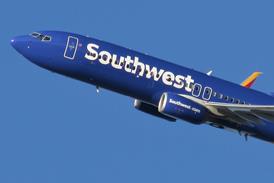Tim Furniss
The apparent collapse of a planned link-up between Pratt & Whitney and France's Snecma to develop a new cryogenic upper stage for a range of launch vehicles could be a blow to the development of a more powerful version of Europe's Ariane 5.Snecma and Pratt & Whitney's liquid-propulsion division in West Palm Beach, Florida had been discussing the joint development of a high-powered upper-stage cryogenic engine for use on Ariane 5, the Boeing Delta IV and the Lockheed Martin Atlas V boosters.
The companies already work together on other projects. Snecma, the prime contractor for Ariane 4 engines and the Vulcain first stage engine for Ariane 5, is a minor subcontractor to P&W for components of engines for the Delta III and Delta IV rockets.
The European Space Agency was hoping to reduce the projected cost of Vinci by producing it with the USA as a common re-startable cryogenic stage for use on Delta and Atlas vehicles and as a result share the resulting reduced development costs.
Producing the engine in Europe will cost more and extra costs may make it more difficult to sell the project to ESA member country ministers although it is vital to the commercial future of Ariane 5.Vinci would enable Ariane 5 to carry two 6,000kg-class communications satellites into geostationary orbit by 2005, a vital upgrade to meet new market projections, enabling the booster to meet customer demand and avoid the high cost of flying one heavy satellite per launch, compared with a cheaper dual-flight where the launch costs are shared by two customers. The current Ariane 5 has a two-payload to geostationary orbit (GTO) capability of 5,800kg and the new Ariane 5E/S-ESV to be introduced in 2002 will increase this to 8,000kg to GTO with the introduction of the Snecma Vulcain 2 first stage engine and a restartable version of the current Aestus upper stage engine. The Ariane 5E/S with the existing one-burn Aestus will offer a 7,100kg to GTO capability in 2002. The next upgrade is the Ariane A5/ECA which will use a one-burn upper stage engine based on the Ariane 4 HMB7, offering a fast-tracked 10,500kg capability in 2001.The Vinci is the intended engine for the later Ariane A5 ECB version.
Source: Flight Daily News























